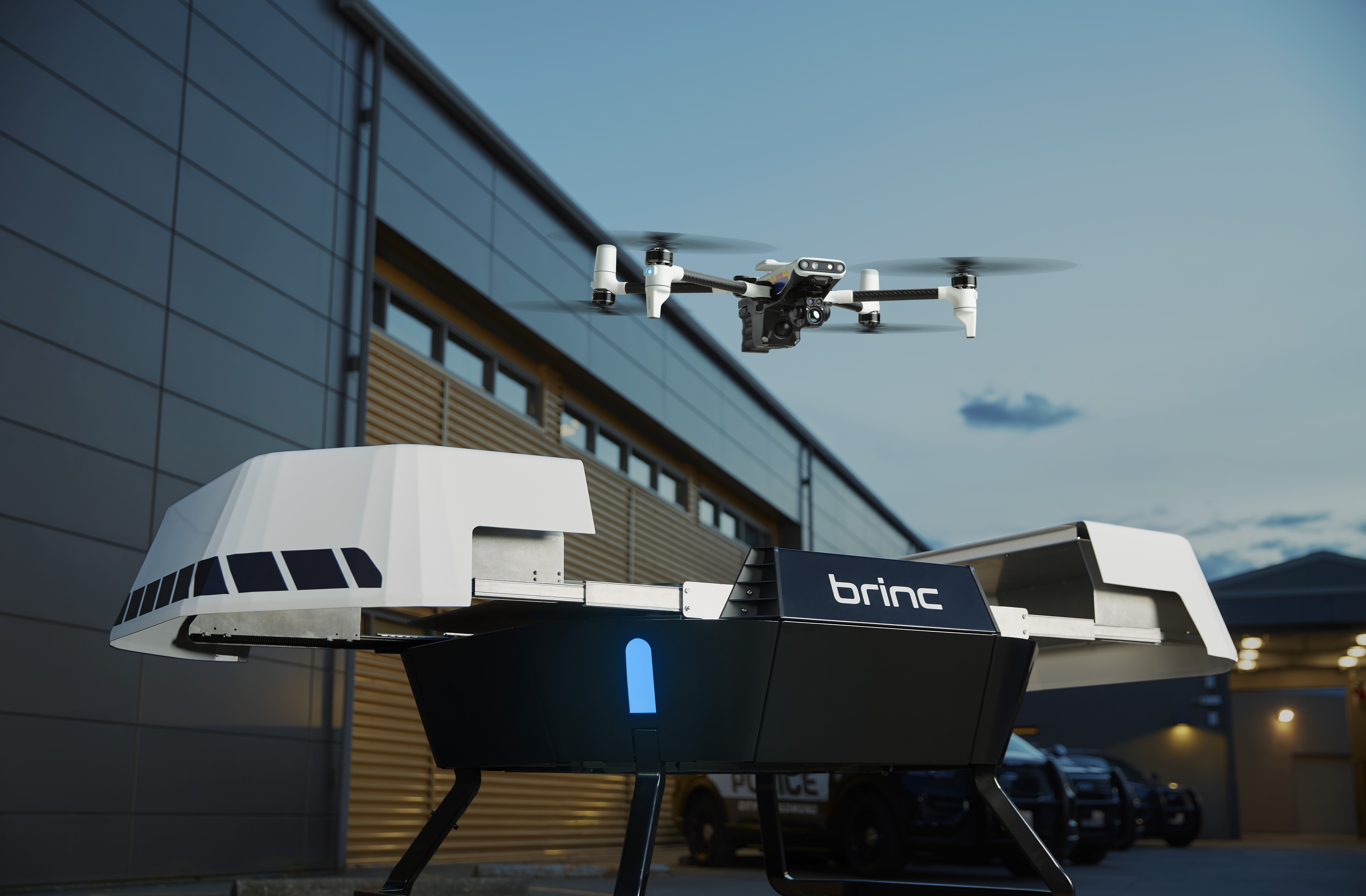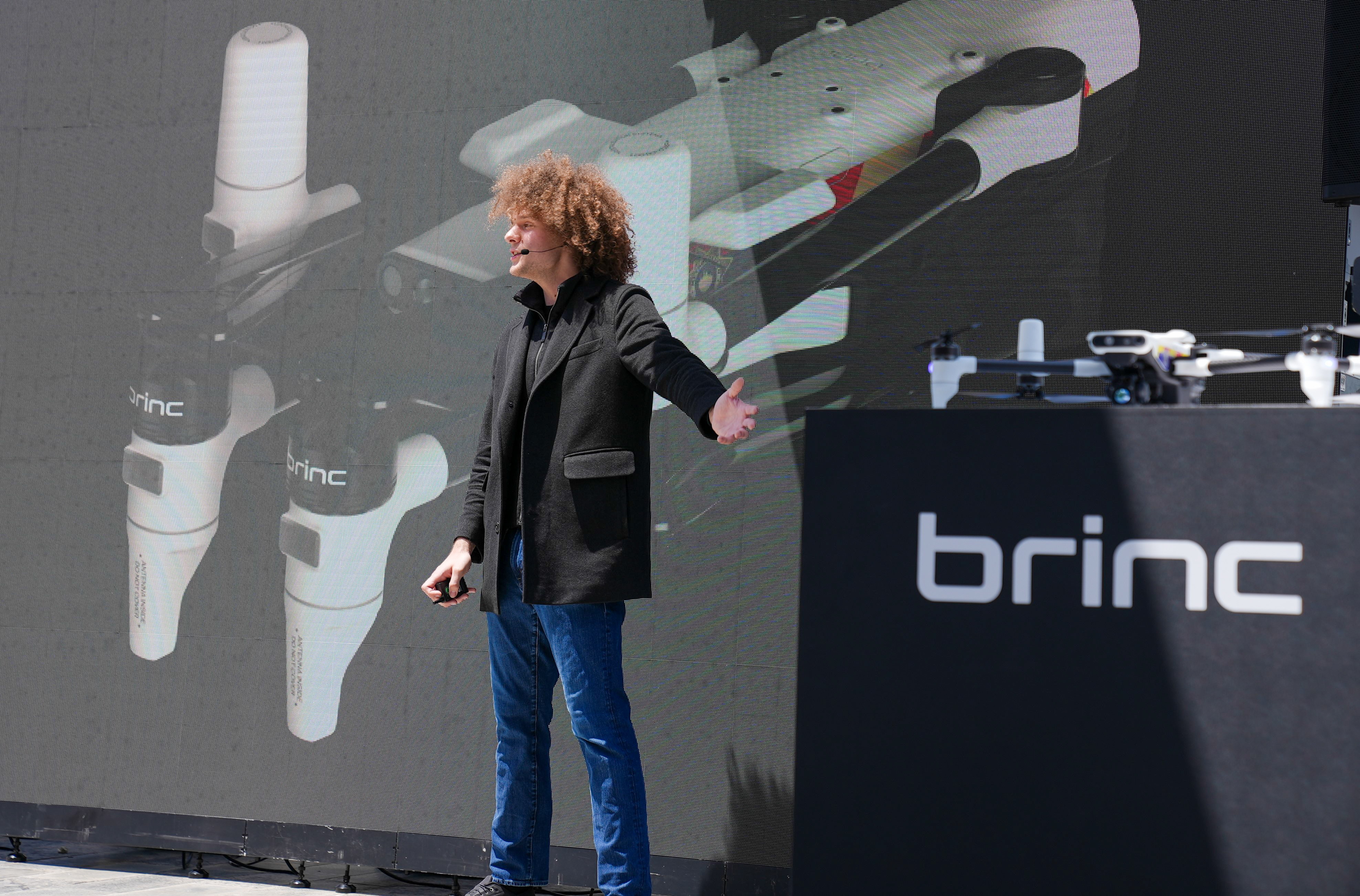
Brinc announced a new public safety drone designed to fly ahead of police in response to 911 calls to quickly assess situations and, in some cases, eliminate the need for direct human involvement entirely.
The Seattle-based company describes the new drone as the first in the industry designed specifically for Drone as First Responder operations, commonly known as DFR. The drone, dubbed “Responder,” is part of a system that also includes a Responder Station to house the drone, and Brinc’s LiveOps software.
Brinc estimates that the drone can resolve about 25% of calls without dispatching officers. For example, the drone can deliver medical supplies, and handle other low-priority calls that don’t require human intervention.
The drone includes an array of high-definition cameras, and a thermal sensor that can identify hot spots during structure fires and help locate people who are missing or injured, according to the company. It can be equipped with red and blue lights, a siren, and agency markings to identify the drone to the public.
In a fictional Brinc video demonstrating the potential of the system, filmed in collaboration with Redmond (Wash.) police personnel, the drone arrives first on the scene of a suspect gas station robbery, providing an operator at the central command station with critical information that helps to resolve the situation.
It’s part of a larger movement in law enforcement to use drones to increase efficiency and improve outcomes, while filling some of the gaps caused by widespread police staffing shortages.
The New York Police Department, as one high-profile example, recently outlined plans to deploy 911 drones in partnership with Skydio, one of Brinc’s competitors. Other players in the industry include Aerodome, based in Los Angeles, which this week announced $21.5 million in new funding for its DFR technologies.
Others working on drone technologies are focusing more on defense applications, including Anduril Industries, started and led by Oculus founder Palmer Luckey.
Brinc, founded by its CEO Blake Resnick, has raised more $80 million in total funding. Its backers including Index Ventures, Tusk Venture Partners, and Next Play Ventures, a firm founded by former LinkedIn CEO Jeff Weiner. OpenAI CEO Sam Altman was its first external investor.
The company has a policy against using its drones as weapons.

Announcing its new system on Thursday morning, Brinc said more than 150 agencies are on track for city-wide 911 drone deployments using the company’s technology. Four plan to launch the system by the end of this year, including law enforcement officials in Hawthorne, Calif., Schenectady, N.Y., and Queen Creek, Ariz., the company said.
Brinc’s goal with the new system is “to revolutionize the public safety landscape by empowering first responders with capabilities that significantly improve emergency response times and outcomes,” Resnick in a news release announcing the new 911 response drone.
Pricing will depend on hardware and configuration, including the number of launch sites and radio repeater sites agencies need, and whether they need ground-based radar to autonomously route drones around existing air traffic.
More than 500 agencies use Brinc’s existing products. Its Lemur 2 drone assists first responders in dangerous situations, offering capabilities such as breaking through glass, flipping after a crash, seeing in the dark, and communicating via microphone. Its Brinc Ball two-way communications device can also be used during standoffs.

